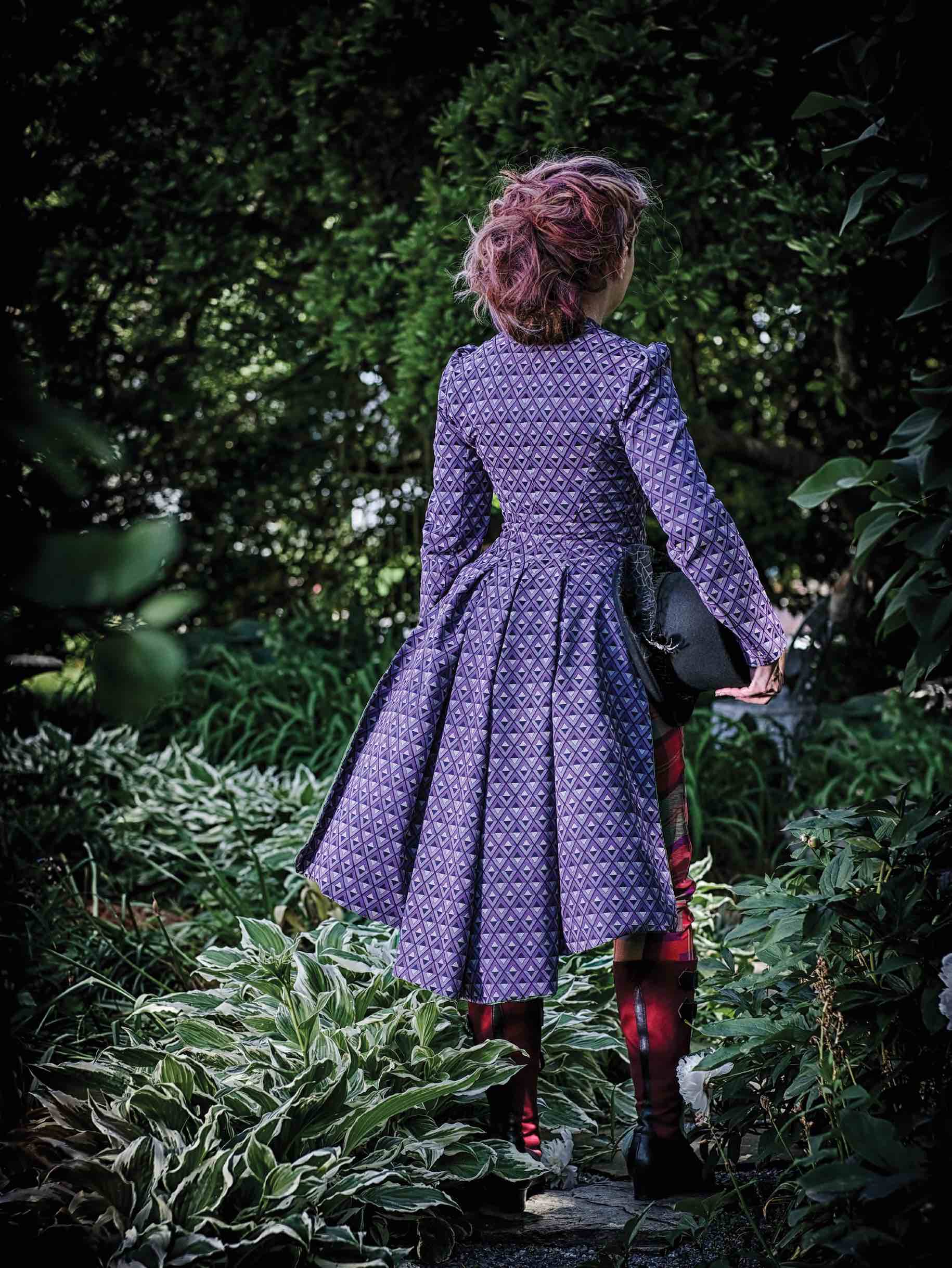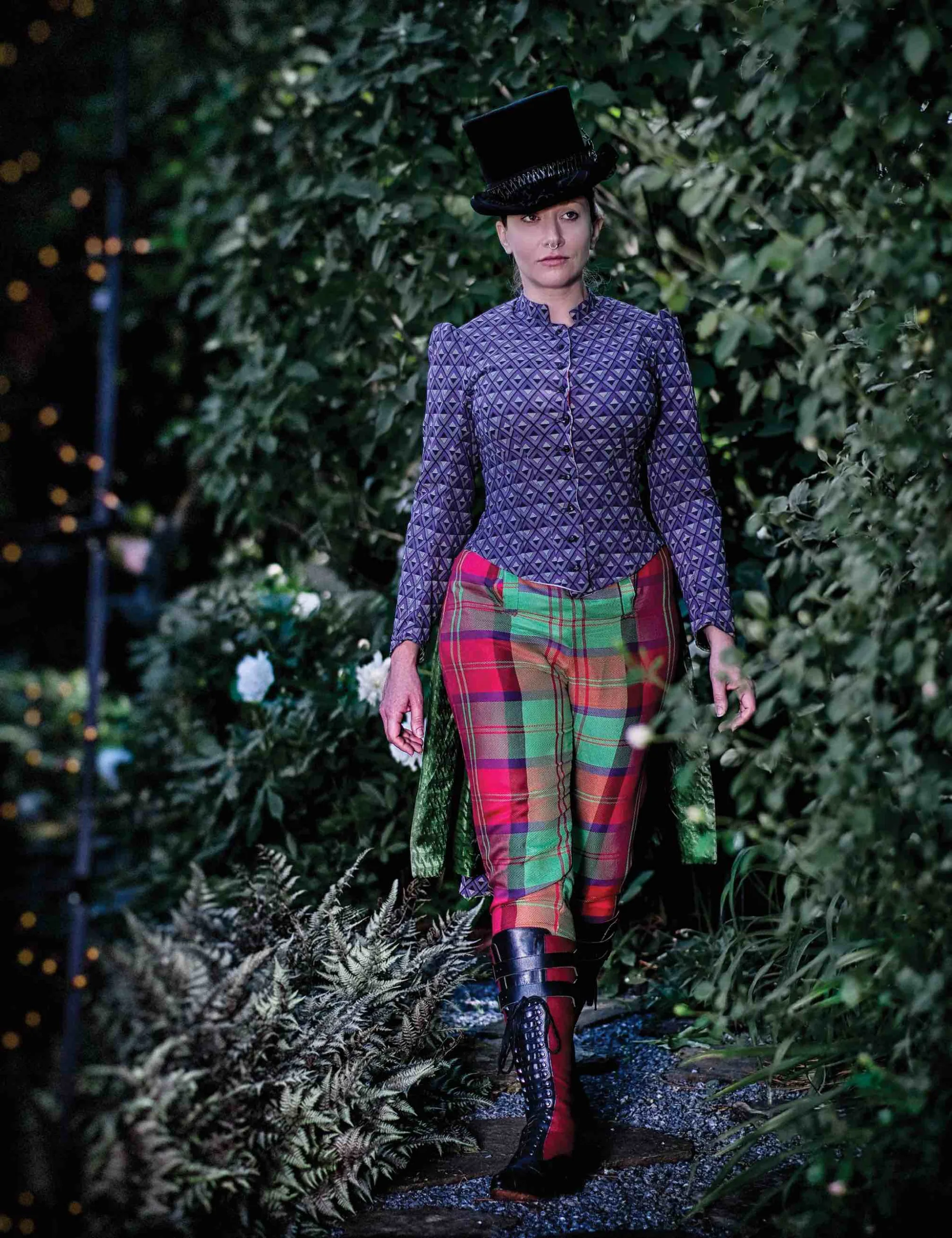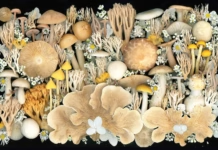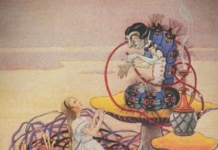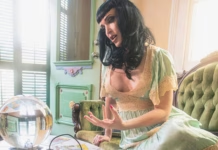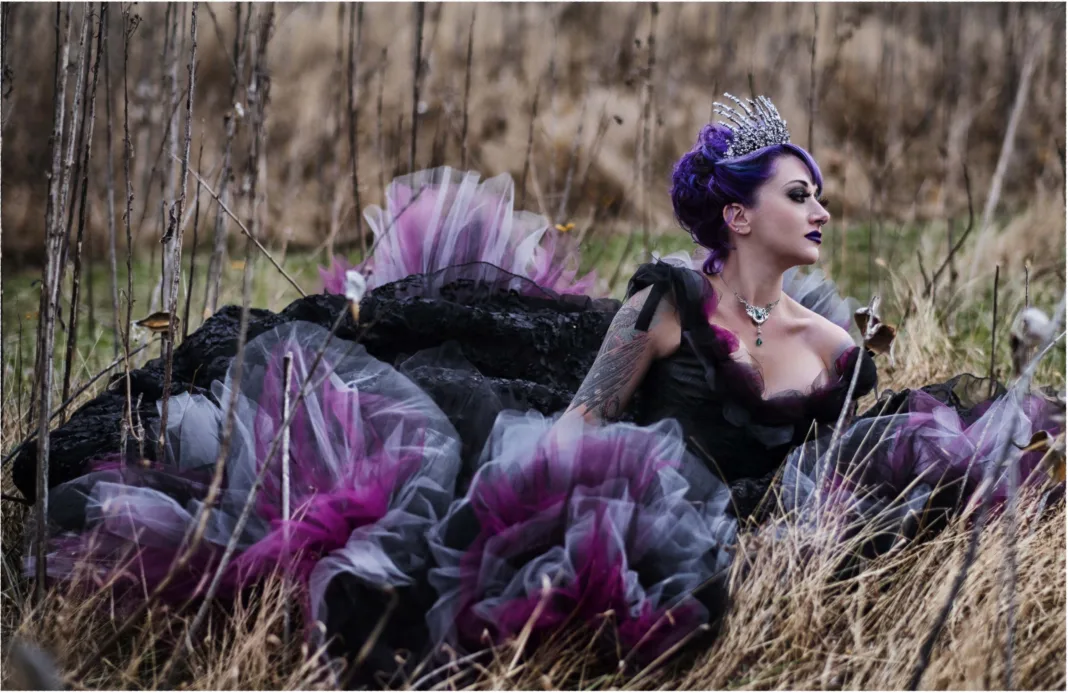Photography: Steve Parke
Model and Wardrobe Designer: London St. Juniper
Accessories: Shoes by American Duchess
Alternative Hair Artist: Erin Elliott – Alter Ego Salon
I fell in love with the gothic long before I knew the word, and long before I understood the myriad worlds it contained. Late at night I would creep from my bedroom to pass through the dark hall and down the cold linoleum-covered stairs to click on the television at the lowest possible volume. If I found what I was looking for, I’d back slowly from the glowing screen to settle on a sofa covered in a rough brown and orange woven upholstery, to watch her: a beautiful woman with long dark hair and a glamorous gown, living in a fascinating home full of treasures. More than anything, I wanted to be her. Even at four years old I knew Morticia Addams, of the mid-1960s television sitcom The Addams Family, was worth risking both the basement spiders and my parents’ wrath.
In my early teens the spark that Tish ignited burst into flame, and I lost myself in books full of seductive monsters and films and art full of even more seductive fashions. I loved the excess of beautiful gowns and sweeping robes and found comfort in stories much larger than my suburban life. And I fell in love with villains, from the romantic vampires of Christopher Pike and L.J. Smith to Dracula, Heathcliff, Bertha Mason, and Nancy Downs. At a time when I felt powerless, their agency was inspiring, and in a time and place I found boring, their expressive appearances were enthralling.
My early obsession was legitimized in a way by my academic career. For one, I learned that “goth” wasn’t necessarily something one bought at Hot Topic (although as an adult I think that’s fine too). A gothic romance was an extraordinary story; unlike the realism that dominated the first English novels of the 18th century, the gothic was a fantasy genre unhindered by the time or place of its writing. Inspired by literal nightmares and a fashion for medievalism, Horace Walpole introduced a haunted castle in 1764 with The Castle of Otranto, and from its ghostly murder and uncomfortable marriage plots has come an amorphous cultural space where the mysterious is beautiful, death is but an inconvenience, fashion can sprawl, and the villain is the star of the story (and usually the best dressed).

Even before Walpole’s time, the term gothic was used to describe a wide spectrum of cultures and ideas. Gothic refers to a Germanic people and a style of architecture. It’s a genre of music and a genre of literature. For the Victorians it described a romanticization of the medieval, most often explored in supernatural stories, and now it describes a contemporary romanticization of the Victorians. We understand it as a subgenre of horror, but it is also the mother of all genre fiction, opening a market for the sci-fi and fantasy and mystery to come. It is a style, an idea, and a lifestyle. The one thing that the gothic is never is fixed or stagnant. Its wrought-iron gates are not closed to interpretation or reinvention and need no keepers. The gothic makes space for all these definitions and ideas simultaneously.
The images that grace the cover of this issue, as well as the opening pages of this story, are an indulgent contemporary gothic romance, from my gown to my skeletal tiara, to my purple hair and stark makeup. Long before my collaboration with photographer Steve Parke and Enchanted Living, I resolved to make myself a birthday present: a “gothic cupcake” of a gown, inspired by notions of beautiful and wicked stepmothers and unrestricted by historical accuracies. I wanted the gown to be as large as I could make it, and I gave it pockets. Unfortunately, the flu kept me from wearing the dress when I intended, so when Enchanted Living invited me to participate in their first gothic issue I said, “I have just the thing!”
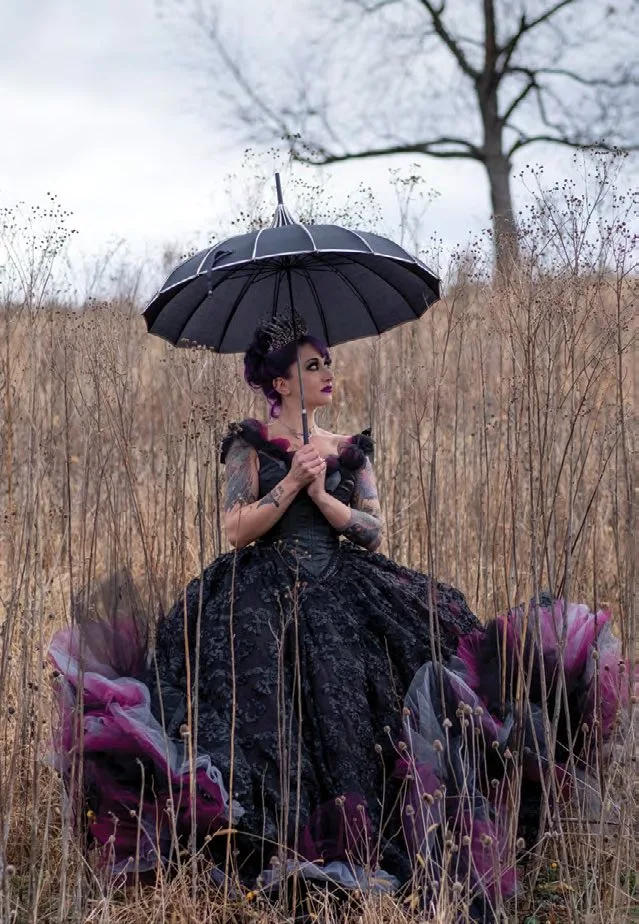
Thankfully all agreed, and my black Tamora gown got her moment in the fall of 2021, when Parke immortalized it in these images here. The name of my gown is a gothic story in its own right, so called for the Queen of the Goths from Shakespeare’s exceptionally violent tragedy, Titus Andronicus. Tamora was not a 19th-century waif suffering under the oppressive control of her evil uncle (as in Uncle Silas), but a fictional queen of a real nomadic Germanic tribe. In history, the Goths actively fought against the Roman Empire around A.D. 400; in Shakespeare’s play Tamora is a powerful warrior and grieving mother whose violent quest for revenge matches the titular character’s, death by death. The gothic of my own fantasy and imagination channels this: not violence or revenge but powerful femininity that may be just a little bit wicked.
In the weave of the tapestry that is the gothic, the weft is the extraordinary and the warp is romance. The Tamora gown is my gothic fantasy: a dark romance of femininity that takes up space and intimidates, a gown too large for real events and close spaces. But the three additional collaborative styles I created and that Parke captured for a second shoot—to complement my Tamora gown and explore the gothic more expansively—tell entirely different stories. At the center of these stories is mascara.
When Parke suggested I create three designs specifically for this issue, I was elated. He asked for colorful Victorian silhouettes with gothic notes, a request that is more historically accurate to the 19th century than he may have realized. Improvements in both textile manufacturing and artificial lighting gave Victorians the resources to produce brighter, more saturated fabrics, and the means to appreciate them in their homes. Readers of 19th century gothic fiction may well have indulged in bold pink stripes and deep green ball gowns. And so I pitched an idea of “color and decay,” focusing on fashions from the fin de siècle, the time of Dracula and Jekyll and Hyde, bustles, tuberculosis, and mourning fashion. I proposed historically grounded silhouettes and patterns, with the color green as a through narrative, inspired by the Victorian love of a shade known as Paris green or Scheele’s green, which infamously used excessive amounts of arsenic. The gothic elements of my designs were in small details—buttons, embroidery—and (I’d assumed but never expressed) in contemporary gothic makeup.
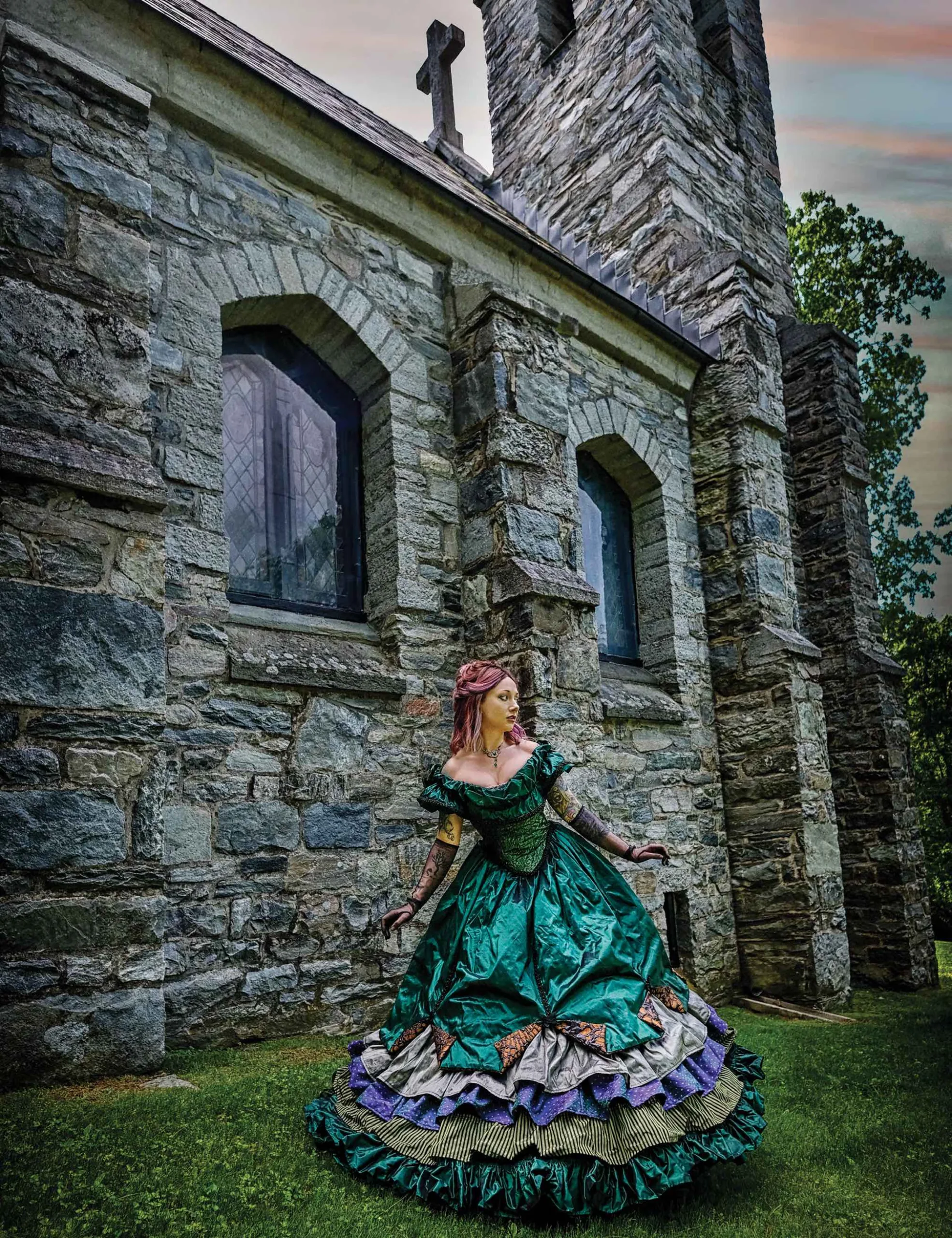
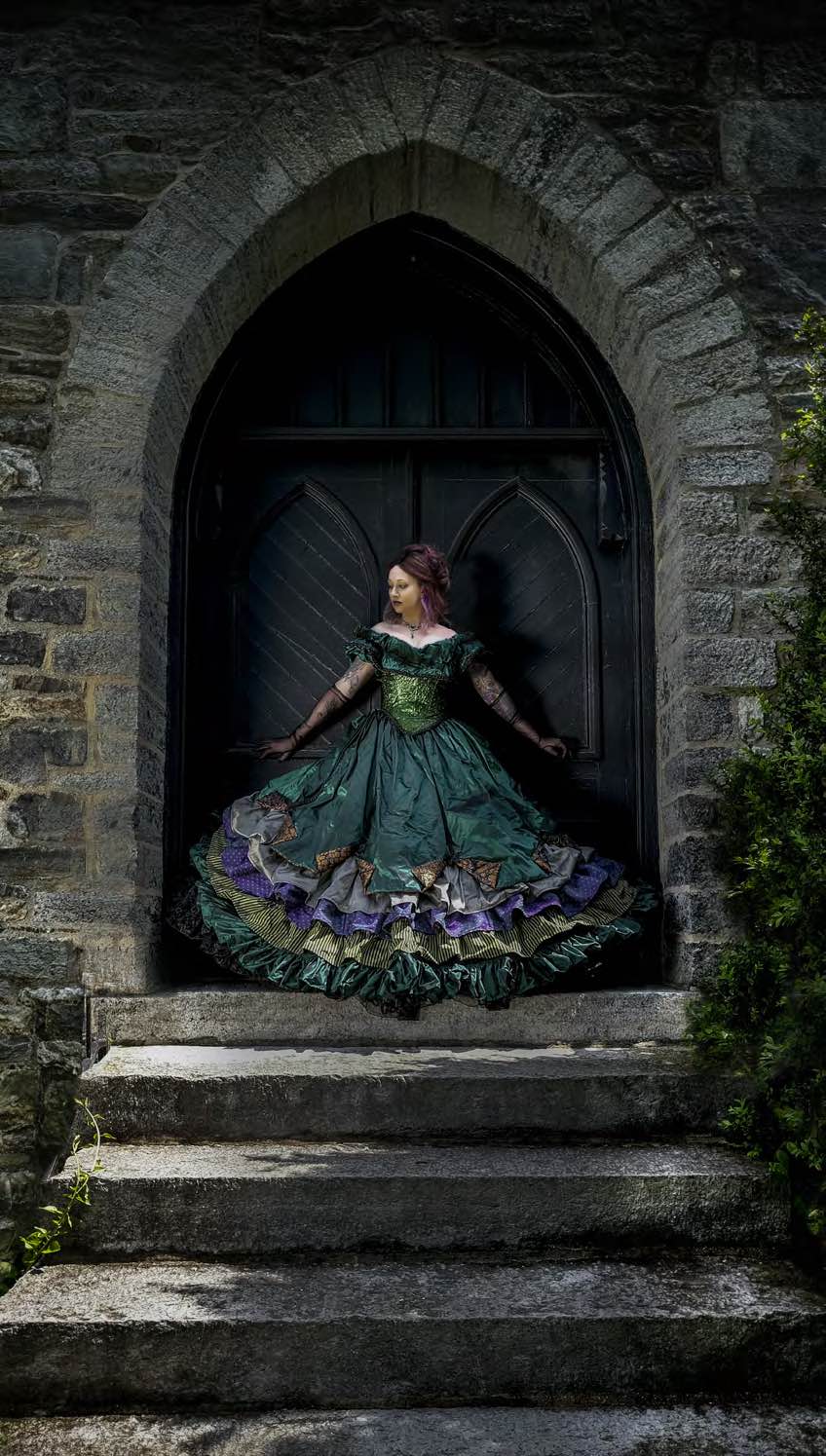
Just as 19th century gothic novelists looked to a medieval past to write their romances, we looked to the 19th century to revisit familiar tropes and traditions. The midcentury ballgown that I designed for Enchanted Living (and that you see on pages 14 and 15) was the most straightforward, from its romantic design to its haunting but colorful palette. This is the shape of ballgowns in historical fantasy, with its wide walking cage and flirtatiously bared shoulders. Its design is intended to recall the infamous 1862 Punch cartoon “The Arsenic Waltz,” satirizing the trend for Paris green and the dangerous chemical used to produce the popular shade. Rumors abounded, then and now, of whirling gowns leaving poisonous dust in their wake and ball attendees wasting away for the sake of fashion. In Parke’s composition the gown itself is a romantic character, tucking neatly into a Cinderella story of balls, romantic rendezvous, and hiding from the mysterious ghost who wanders the halls of the manor.
To represent the second wave of Victorian gothic fascination in the 1880s and ’90s, I opted for an 1888 walking dress with a fantastical bustle. The shape of the day dress is one I’ve had in my mind for ages, although for Enchanted Living I traded the caged demons of my original design for less aggressive crows. Fashion plates from the 1880s are a riot of color and texture, popularizing bold stripes and bright hues. I imagined the walking dress as a kind of sickly candy and selected striped tweeds in bright pink and Paris green for saturated sweetness. In this dress is a bit of Dr. Jekyll or Dorian Gray: fashionable and appropriate, but with something a bit wrong. Although the wrongness of these gothic villains is their morality, the “wrongness” of the walking dress is represented by modern gothic aesthetic touches, from the spider embroidery on the velvet cuffs to the lace bats and exposed cage of the bustle. The end result remains my favorite of the three sets of clothes for its elements of “creepy cheesecake”: a marriage of traditionally sweet femininity with sinister details.
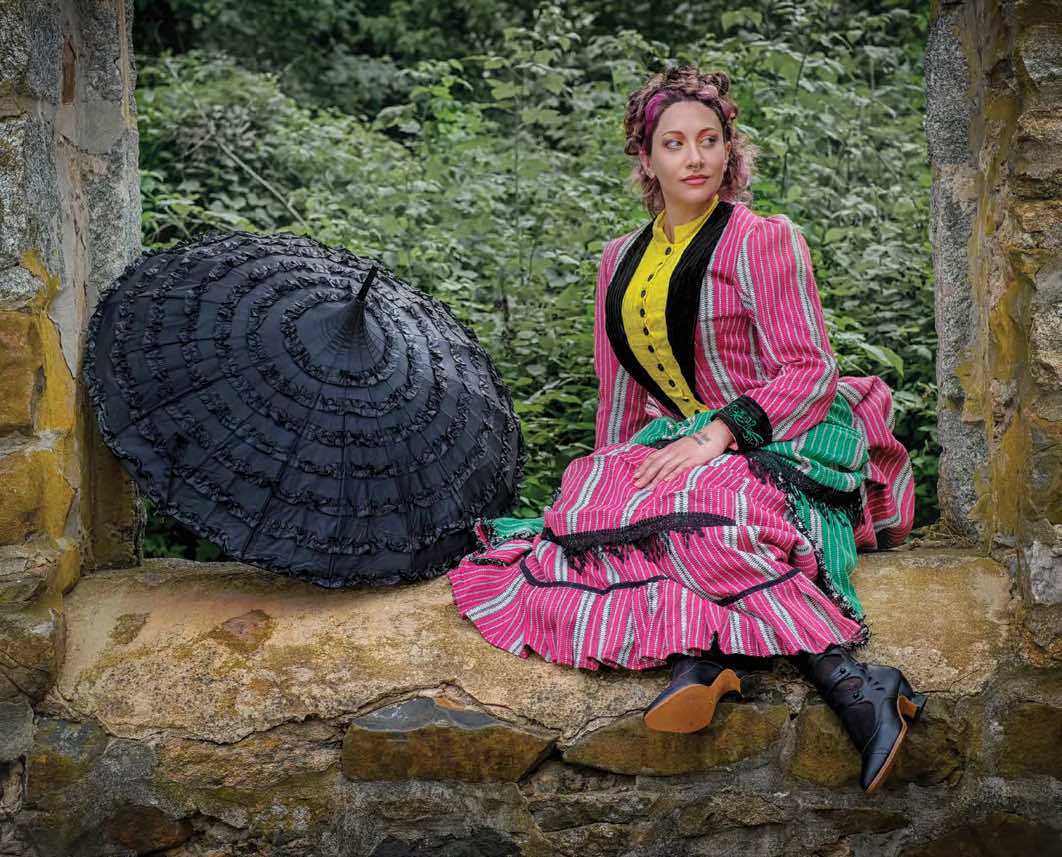
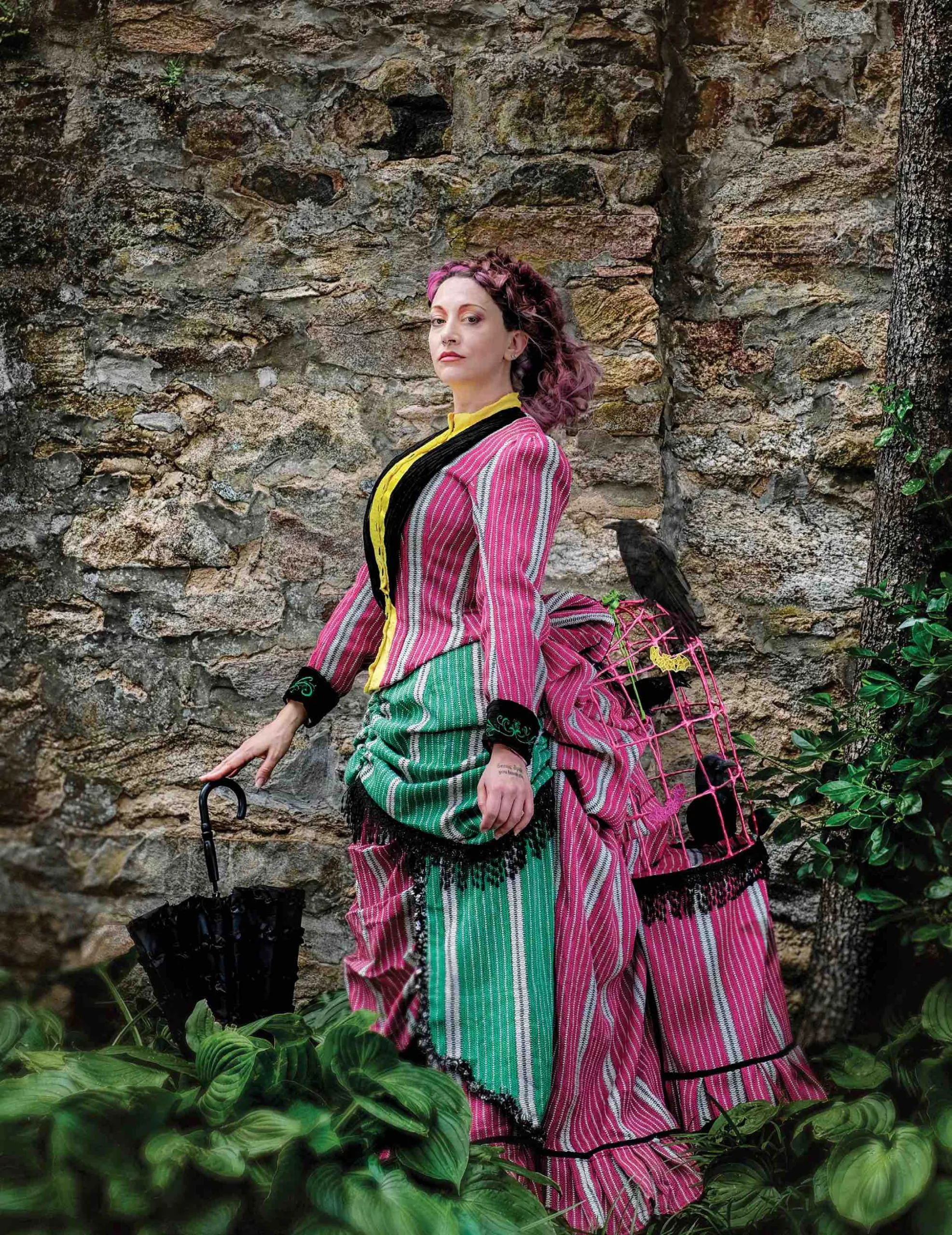
The masculine suit I created for the magazine … did not go to plan. Admittedly, men’s fashion is not a particular area of interest for me, and I have far less experience with masculine cuts and styles. I knew from novels and newspapers that loud prints often complemented—or clashed with—more austere middle-class respectability, and I was particularly excited by fashion plates from the 1850s to the 1870s detailing plaid waistcoats, striped breeches, and tall hats (and sometimes all three). Many of the designs I discovered were downright tacky in their execution, and this foppish disregard for the somber respectability we associate with Victorians today delighted me.
In fit I found my lack of experience limiting. I made the breeches in a plaid wool but fit them without a corset, which was itself needed to give the proper shape to my tailcoat. The men’s shirt, with its delightful removable collar and cuffs and skull studs, was too long and bulky to fit well in the pants. But the tails—oh, the tails! There is a detail I stand behind. Using a pattern drawn by Truly Victorian from an 1883 Harper’s Bazar, the bodice has a feminine cut with powerful energy that looks best when you turn your back on someone. Like the walking dress, the devil’s in the details, from a long row of black skull buttons to the arsenical green lining.
None of the clothes made for Enchanted Living rely on the traditions of mourning culture and memento mori popularized by the Victorians and favored in contemporary gothic aesthetics. But worn in a beautiful garden or in the ruins of old churches, they play the principal character in a story of something other, where a threat may exist outside the frame and the story is as large as the hemline. Like the gothic itself, they are romanticized productions, whispering ghost stories and promising fantastic, intoxicating conclusions.
